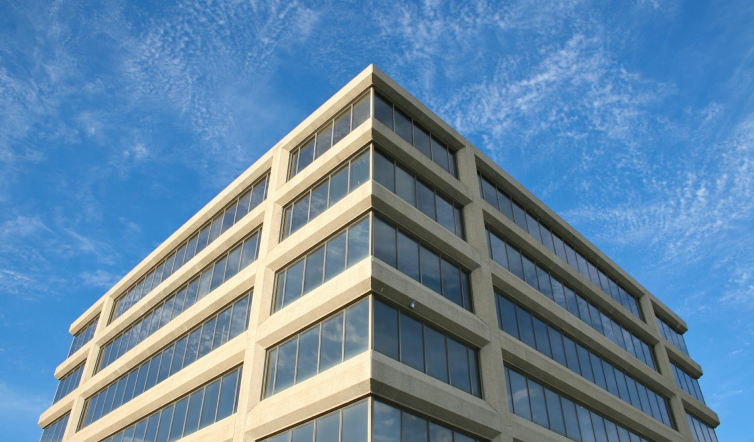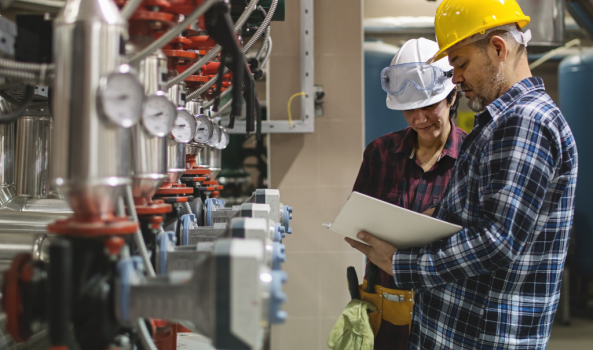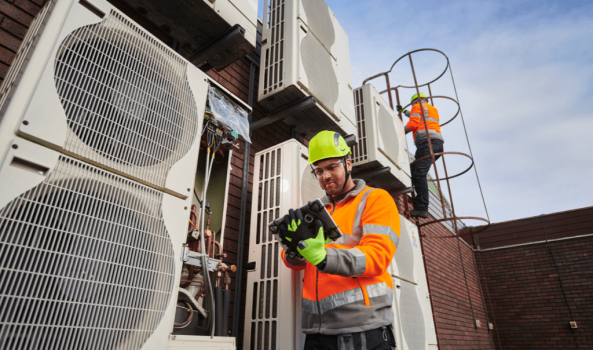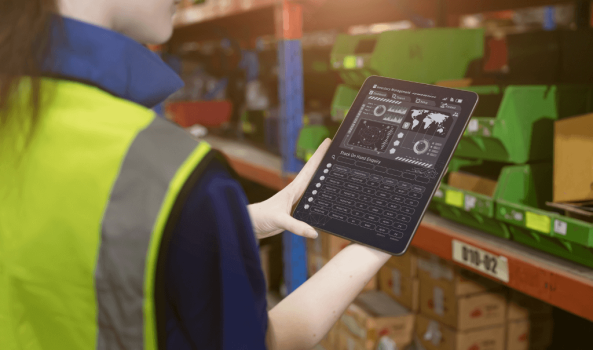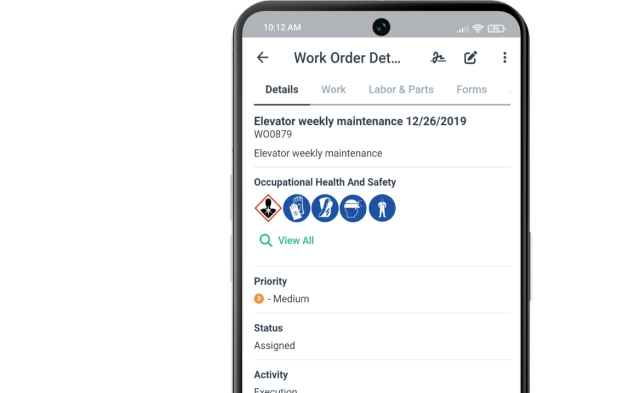Get a Free WorkTrek Demo
Let's show you how WorkTrek can help you optimize your maintenance operation.
Try for freeCommercial property maintenance represents the backbone of successful real estate investment.
Whether you’re a seasoned property manager overseeing multiple commercial buildings or a property owner just starting your journey in commercial real estate, understanding how to budget for commercial property maintenance can make the difference between profitable operations and unexpected financial setbacks.
Having an effective maintenance program protects your investment and ensures tenant satisfaction.
Without a well-structured maintenance budget, even the best properties can turn into money pits.
Key Takeaways
- Allocate 2-5% of your property’s current replacement value annually for maintenance expenses
- Budget $2.00-$2.50 per square foot for office buildings, $1.50-$2.00 for retail properties
- Reserve 10-15% of your maintenance budget for emergency repairs and unexpected maintenance issues
Understanding Commercial Property Maintenance Costs
Commercial property maintenance covers the activities designed to keep your building functional, safe, and attractive to tenants.
These maintenance tasks can range from routine inspections and preventive maintenance to emergency repairs and major system overhauls.
Operating expenses for commercial properties typically include regular maintenance activities such as cleaning, landscaping, and basic repairs.
Meanwhile, more significant expenditures involve HVAC systems, electrical system upgrades, and structural improvements that can substantially impact your maintenance budget.
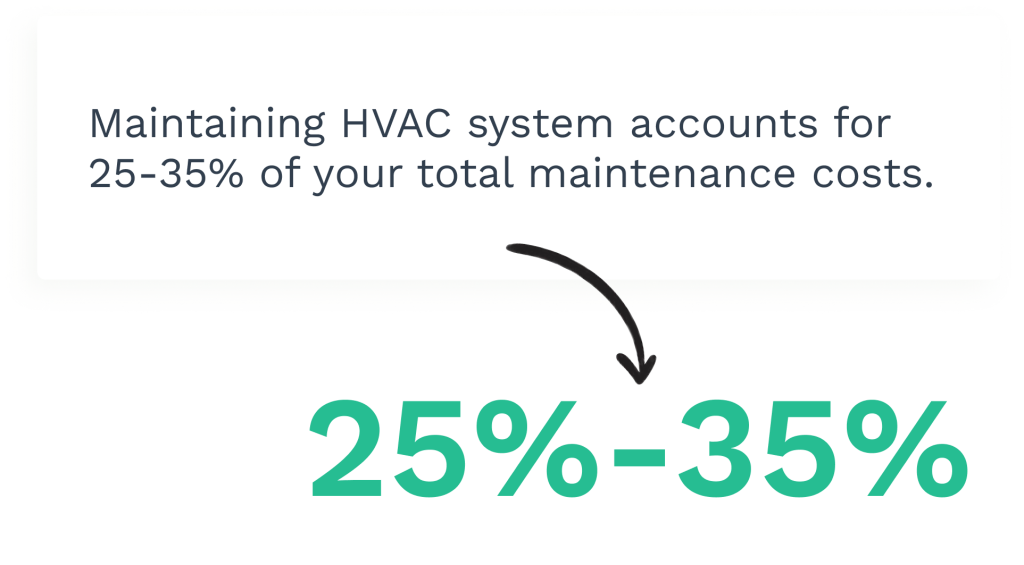
Property managers and commercial property owners know that maintenance costs vary significantly based on factors like building age, size, location, and tenant usage patterns.
For example, a 50,000 square foot office building will have vastly different maintenance demands compared to a retail strip center or industrial warehouse.
Essential Components of Your Maintenance Budget
When developing your property maintenance strategy, several key areas require careful consideration and budget allocation:
Preventive Maintenance Programs
A comprehensive preventive maintenance program is the foundation for any cost-effective property management.
With regular inspections and preventive maintenance tasks, you can identify minor issues before they evolve into major repairs.

In our experience, this proactive maintenance approach can deliver significant cost savings by extending equipment life and reducing the frequency of emergency repairs.
Preventive maintenance tasks should include:
- Monthly HVAC maintenance and filter replacements
- Quarterly electrical system inspections
- Annual roof assessments and gutter cleaning
- Regular testing of fire safety systems
- Routine inspections of plumbing and water systems
Routine Maintenance Activities
Performing daily and weekly maintenance activities can keep your commercial properties operating smoothly.
Some of these routine tasks include janitorial services, landscape maintenance, parking lot upkeep, and basic repairs that maintenance technicians can handle in-house.
Another strategy for property management teams is to conduct regular inspections to identify maintenance needs early.
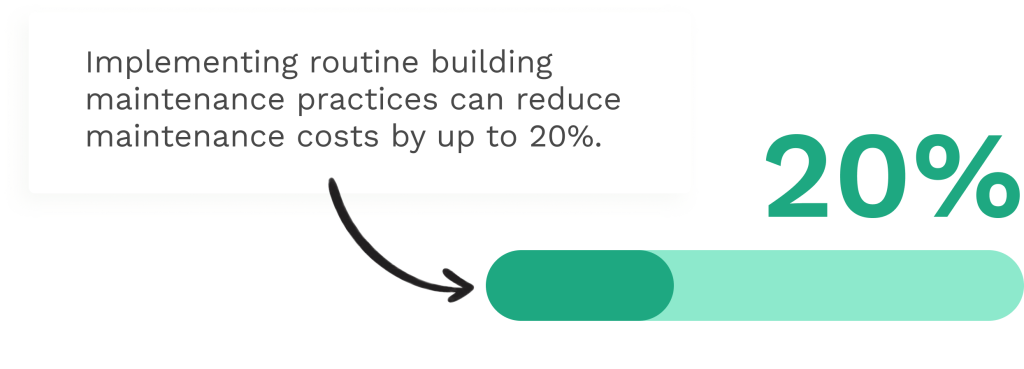
This systematic approach helps maintain property value while keeping maintenance expenses predictable and manageable.
Emergency Repair Reserves
No one can entirely avoid unexpected emergencies. Critical systems failures, severe weather damage, or tenant-related damages can quickly strain your maintenance budget without adequate reserves.
Facility managers recommend maintaining emergency funds equivalent to 10-15% of your annual maintenance budget.
This contingency fund ensures you can address urgent safety concerns and costly problems without compromising ongoing operations or tenant satisfaction.
Proven Methods for Calculating Maintenance Budgets
Several established formulas help property owners estimate appropriate maintenance budget levels:
Current Replacement Value Method
The most common approach involves calculating 2-5% of your property’s current replacement value annually.
For example, if your commercial building costs $2 million to replace, budget between $40,000-$100,000 for annual maintenance expenses.
This method provides valuable insights into the relationship between property value and maintenance requirements, helping you benchmark against industry standards.
Square Footage Formula
Based on industry data, another way to look at this is by budgeting approximately $2.00-$2.50 per square foot annually for office buildings, with retail properties typically requiring $1.50-$2.00 per square foot.
Manufacturing facilities and specialized commercial buildings may require higher allocations due to complex mechanical systems and increased usage.
Percentage of Rental Income
Some experienced property managers allocate 25-35% of gross rental income toward all operating expenses, with maintenance representing roughly 15-20% of that total.
This approach ties maintenance spending directly to property income, ensuring proportional investment in property upkeep.
Strategic Maintenance Planning for Long-Term Success
Property maintenance is more than just reactive repairs. It includes strategic planning that improves operational efficiency and property value over time.
Implementing Technology Solutions
Modern Computerized Maintenance Management Systems like WorkTrek provide valuable insights into maintenance patterns, equipment performance, and cost trends.
WorkTrek can help property management teams track expenses, schedule preventive maintenance tasks, and identify opportunities for operational efficiency improvements.
Technology integration offers several advantages:
- Automated maintenance scheduling and reminders
- Historical data analysis for budget forecasting
- Real-time tracking of maintenance activities
- Enhanced communication between maintenance teams and management
Energy Efficiency Investments
Making energy-efficient upgrades can improve operational savings and tenant satisfaction.
For instance, implementing a HVAC maintenance program that includes regular tune-ups and filter replacements can reduce utility costs and extend equipment life.
Some areas you should budget for include:
- LED lighting conversions
- Programmable thermostat installations
- Window and insulation improvements
- Energy-efficient HVAC system replacements
Another thing to consider is that these improvements often qualify for utility rebates and tax incentives, which can help offset initial investment costs while delivering long-term savings.
Vendor Relationship Management
Create reliable relationships with your contractors and service providers. Having good vendor relationships often results in preferential pricing and priority service during emergencies.
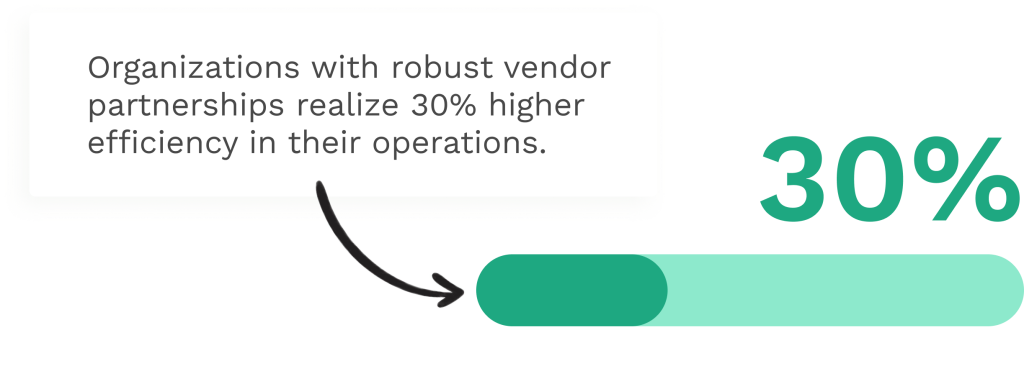
Maintain a diverse network of qualified professionals including:
- HVAC technicians for system maintenance and repairs
- Electrical contractors for safety inspections and upgrades
- Plumbing specialists for water system maintenance
- Roofing contractors for annual inspections and repairs
- General contractors for tenant improvements and major renovations
Maximizing Tenant Satisfaction Through Proactive Maintenance
There is a direct correlation between tenant satisfaction and property value.
A well-maintained commercial property often commands higher rents and lower turnover.
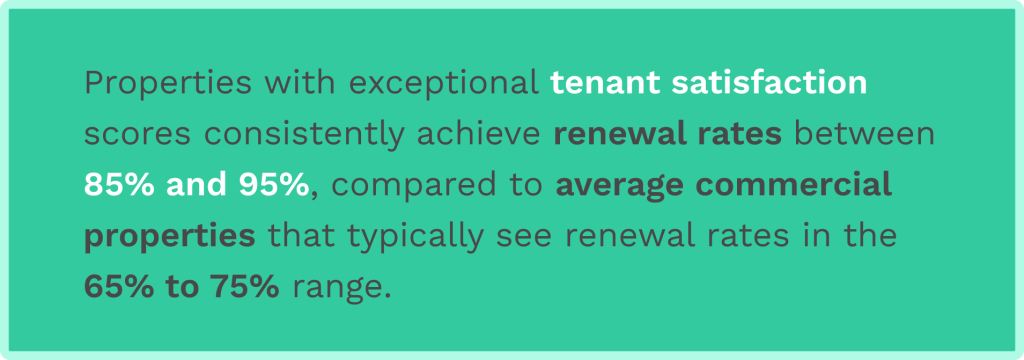
A few maintenance activities that enhance tenant satisfaction include:
- Prompt response to maintenance requests
- Clean, well-maintained common areas
- Reliable HVAC systems and comfortable temperature control
- Adequate lighting and electrical system reliability
- Professional landscaping and exterior maintenance
Cost Control Strategies and Best Practices
To manage costs effectively, you need to balance immediate maintenance needs with long-term property preservation goals.
Task Management and Prioritization
Develop systematic approaches to prioritize maintenance activities based on safety requirements, tenant impact, and cost considerations. Address safety concerns immediately, followed by items affecting tenant operations, then general property improvements.
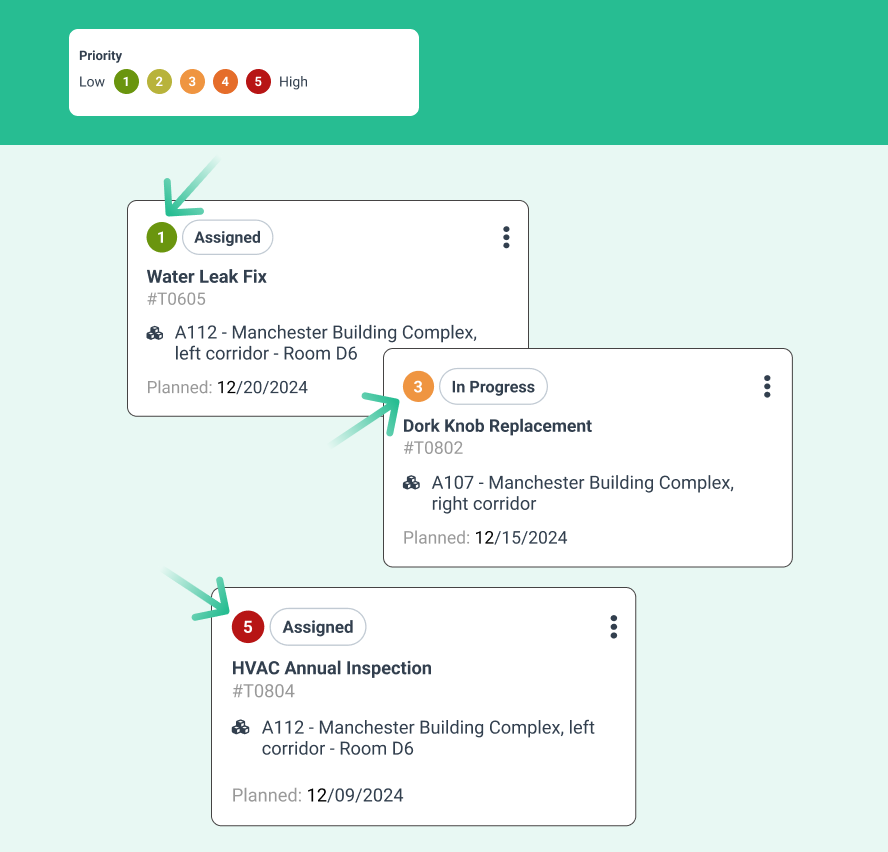
Use historical data to identify recurring maintenance issues and develop targeted solutions.
If certain equipment requires frequent repairs, consider replacement rather than continued maintenance expenses.
Seasonal Maintenance Planning
It is always best to align maintenance activities with seasonal requirements. This helps optimize both scheduling and costs.
Spring preparation might include HVAC system tune-ups and exterior cleaning, while fall activities focus on weatherization and heating system preparation.
Seasonal planning helps distribute maintenance expenses throughout the year. This ensures optimal property performance during peak usage periods.
Preventative Maintenance Program Optimization
Regular assessment of your preventive maintenance program ensures continued effectiveness and cost efficiency. Track maintenance outcomes to identify successful strategies and areas needing improvement.
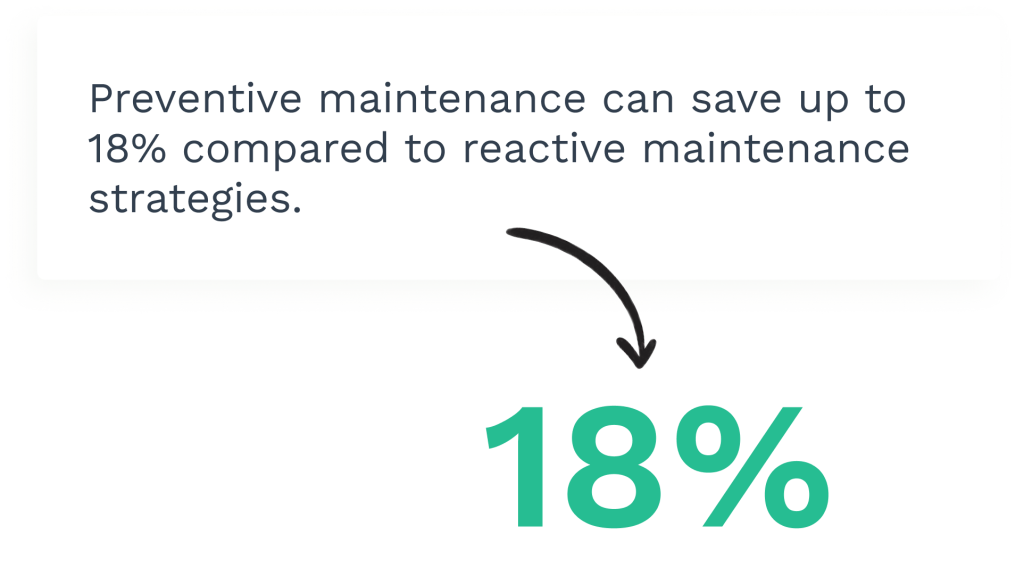
Consider factors such as:
- Equipment reliability improvements
- Reduction in emergency repair frequency
- Extended equipment lifecycles
- Improved energy efficiency
- Enhanced tenant satisfaction metrics
Budgeting for Different Property Types
Different commercial property types present unique maintenance challenges. That means you need to tailor your budget to fit each unique building type:
Office Buildings
Office properties typically require regular HVAC maintenance, elevator servicing, and common area upkeep.
Budget considerations should include technology infrastructure maintenance, security system updates, and accessibility compliance requirements.
Retail Properties
In general, retail centers face high tenant turnover and frequent tenant improvements.
Maintenance budgets should accommodate storefront modifications, signage updates, and parking area maintenance.
Shopping centers also require additional security and lighting considerations.
Industrial Properties
Manufacturing and warehouse facilities require regular mechanical system maintenance, specialized equipment servicing, and safety compliance programs.
These properties may require higher maintenance allocations due to heavy usage and specialized requirements.
Mixed-Use Developments
Properties that combine residential, retail, and office uses require comprehensive maintenance programs addressing diverse tenant needs and regulatory requirements.
It is best to coordinate maintenance activities to minimize disruption across different property sections.
Creating Your Annual Maintenance Budget
It is important to create a detailed annual budget and review it regularly. Develop that plan using a systematic evaluation of property conditions, historical maintenance patterns, and anticipated needs.
Assessment and Planning Process
The first step is a comprehensive property inspection involving qualified professionals.
Document current conditions, identify deferred maintenance items, and prioritize upcoming needs based on safety, functionality, and cost considerations.
Perform a full review of previous years’ maintenance expenses to identify trends and seasonal patterns.
With this historical data, you can gain valuable insights for future budget projections and help identify areas where costs may be reduced through preventive measures.
Budget Categories and Allocation
Consider structuring your budget with clear categories:
Routine Maintenance (40-50% of budget):
- Daily and weekly cleaning services
- Landscape maintenance and grounds keeping
- Basic repairs and touch-up work
- Regular inspections and minor adjustments
Preventive Maintenance (25-35% of budget):
- Scheduled HVAC maintenance
- Electrical system inspections
- Roof and structural assessments
- Equipment servicing and calibration
Capital Improvements (15-25% of budget):
- Major equipment replacements
- System upgrades and modernization
- Structural improvements
- Technology infrastructure updates
Emergency Reserves (10-15% of budget):
- Unexpected repair costs
- Weather-related damage
- Equipment failures
- Tenant-related emergency repairs
Monitoring and Adjustment
Create a regular monthly budget review process to track actual expenses against projections.
This level of monitoring allows for timely adjustments and helps identify trends that may impact future budget planning.
Use a CMMS like WorkTrek to track spending patterns, vendor performance, and project outcomes.
This data becomes invaluable for future budget development and cost optimization efforts.
How WorkTrek CMMS Optimizes Commercial Property Maintenance Budgets
Implementing a modern and simple-to-use CMMS like WorkTrek can transform how property managers approach maintenance budgeting and cost control.
With WorkTrek you get access to data-driven insights and operational efficiency needed to optimize maintenance expenses while improving property performance.
Comprehensive Budget Tracking and Analysis
WorkTrek CMMS offers sophisticated budget tracking capabilities that help facility managers monitor maintenance expenses in real-time.
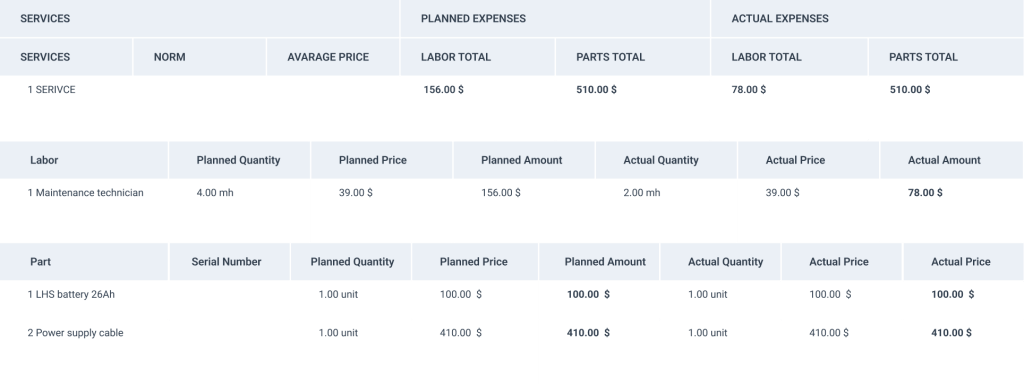
The system categorizes costs across different maintenance activities, vendors, and property areas, providing valuable insights into spending patterns and cost optimization opportunities.
Key budgeting features include:
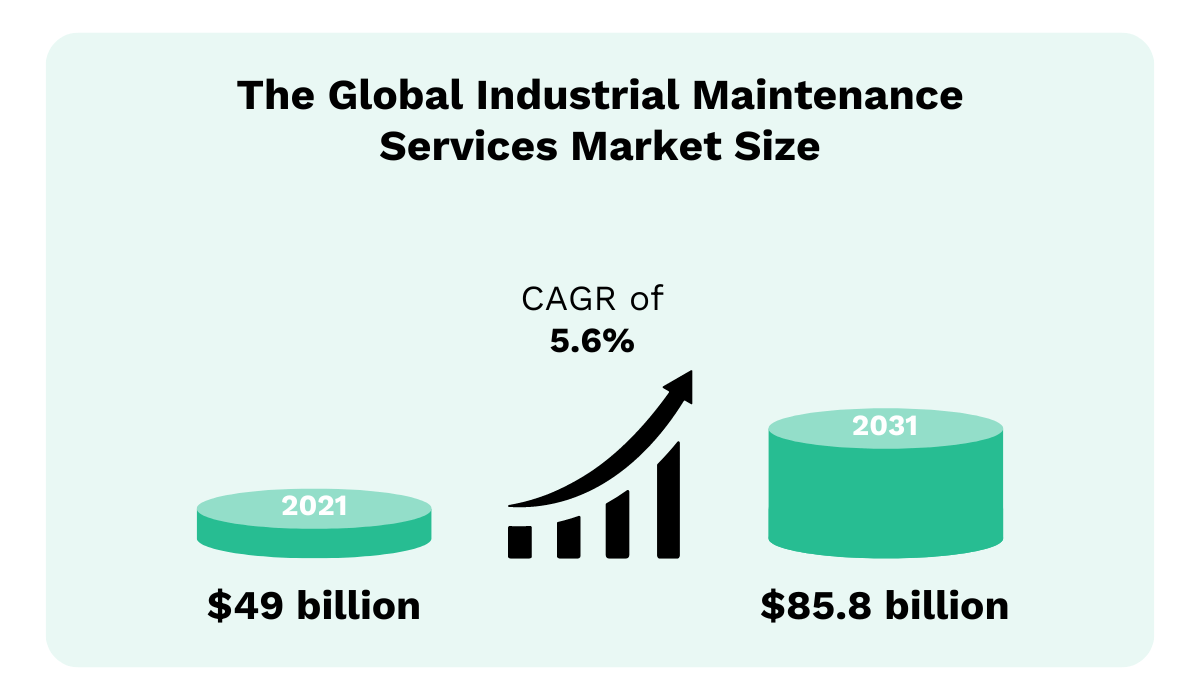
- Real-time expense tracking across all maintenance tasks and projects
- Automated cost categorization for routine maintenance, preventive maintenance, and emergency repairs
- Vendor cost analysis to identify the most cost-effective service providers
- Historical data analysis to predict future maintenance demands and costs
Preventive Maintenance Program Optimization
WorkTrek’s preventive maintenance scheduling ensures maintenance technicians perform critical tasks on time and on budget. This reduces the likelihood of costly emergency repairs.
WorkTrek’s automated scheduling helps property management teams maintain consistent maintenance activities that extend equipment life and minimize unexpected maintenance issues.
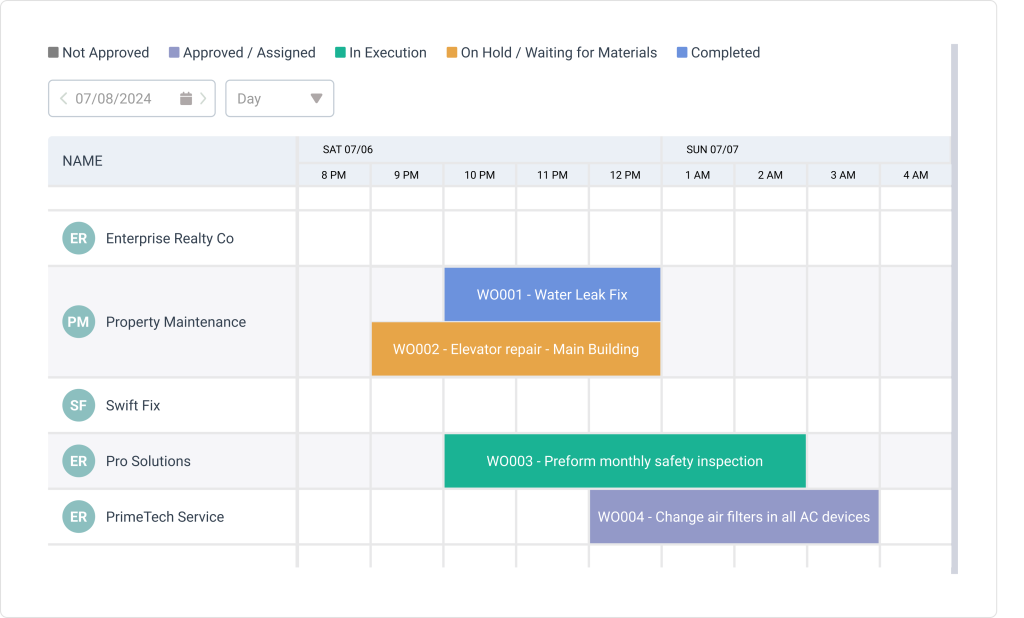
Preventive maintenance benefits include:
- Automated scheduling for HVAC maintenance, electrical inspections, and routine tasks
- Equipment lifecycle tracking to anticipate major repairs and replacements
- Maintenance history documentation for warranty claims and asset management
- Performance analytics to optimize maintenance frequencies and reduce costs
Enhanced Operational Efficiency
WorkTrek streamlines facility management and maintenance workflows, reducing administrative overhead and improving maintenance team productivity. The system’s mobile capabilities allow maintenance technicians to access work orders, update task status, and document completed work directly from the field.
Operational improvements include:
- Mobile work order management for faster response times
- Digital documentation eliminates paperwork and improves record-keeping
- Resource optimization through intelligent scheduling and task management
- Communication enhancement between property managers, tenants, and maintenance teams
Data-Driven Decision Making
The platform provides comprehensive reporting and analytics that help property owners make informed decisions about maintenance investments and budget allocations.
These valuable insights enable proactive maintenance strategies that deliver significant cost savings over time.
Analytics capabilities include:
- Cost per square foot analysis for benchmarking against industry standards
- Equipment performance metrics to identify underperforming assets
- Maintenance trend analysis to predict future budget requirements
- ROI calculations for capital improvement projects and equipment replacements
Tenant Satisfaction and Retention
WorkTrek’s easy-to-use tenant portal functionality allows tenants to submit maintenance requests directly through the system.
This improved communication improves tenant satisfaction while providing property managers with better visibility into tenant needs and concerns.
Tenant-focused features include:
- Online maintenance request submission for faster response times
- Automated status updates keep tenants informed throughout the repair process
- Service quality tracking to ensure consistent maintenance standards
- Satisfaction surveys to measure and improve service delivery
Budget Forecasting and Planning
The system’s predictive analytics help property managers develop more accurate maintenance budgets by analyzing historical patterns, equipment conditions, and industry benchmarks.
This data-driven approach reduces budget surprises and enables more strategic maintenance planning.
Forecasting capabilities include:
- Predictive maintenance recommendations based on equipment condition and usage
- Budget variance analysis to identify areas of over- or underspending
- Seasonal planning tools to distribute maintenance activities throughout the year
- Capital expenditure planning for major equipment replacements and upgrades
Integration with Financial Systems
WorkTrek seamlessly integrates with popular accounting and property management software. This ensures accurate financial reporting and streamlined budget management.
This integration eliminates duplicate data entry while providing comprehensive visibility into maintenance costs and their impact on property profitability.
By implementing WorkTrek CMMS, commercial property owners and facility managers gain the tools and insights needed to optimize their maintenance budgets, improve operational efficiency, and enhance property value.
The Impact of Deferred Maintenance
Most maintenance managers do their best to avoid deferred maintenance. That’s mainly because deferred maintenance can lead to catastrophic issues.
Some of those include:
- Exponentially higher repair costs
- Reduced equipment lifecycles
- Decreased property value
- Tenant dissatisfaction and potential lease violations
- Safety risks and liability exposure
- Regulatory compliance issues
Consistently underfunding maintenance budgets can lead to larger financial challenges.
Environmental Regulations and Compliance Costs
Every modern commercial property must comply with increasingly complex environmental regulations. This can affect everything from energy efficiency to waste management.
Budget for compliance-related expenses, including:
- Environmental impact assessments
- Energy efficiency reporting and improvements
- Waste management and recycling programs
- Water conservation initiatives
- Indoor air quality monitoring and improvements
Technology Integration and Automation Systems
Modern commercial properties increasingly rely on sophisticated building automation systems for optimal performance and cost control.
These systems require specialized maintenance and periodic upgrades that should be factored into long-term budget planning.
Building automation benefits include:
- Improved energy efficiency through optimized system operation
- Enhanced tenant comfort through consistent environmental control
- Reduced maintenance costs through predictive maintenance capabilities
- Better data collection for informed decision-making
- Improved security and access control
Conclusion
A successful commercial property maintenance requires a comprehensive approach that balances immediate needs with available budgets.
Implementing a structured budgeting process, embracing preventive maintenance programs, and maintaining adequate reserves for unexpected expenses can help protect your investment and reduce unexpected costly repairs.
Remember that regular maintenance is essential for long-term success in commercial real estate.
While initial budget allocations may seem substantial, the cost of deferred maintenance far exceeds the investment in proactive property care.



